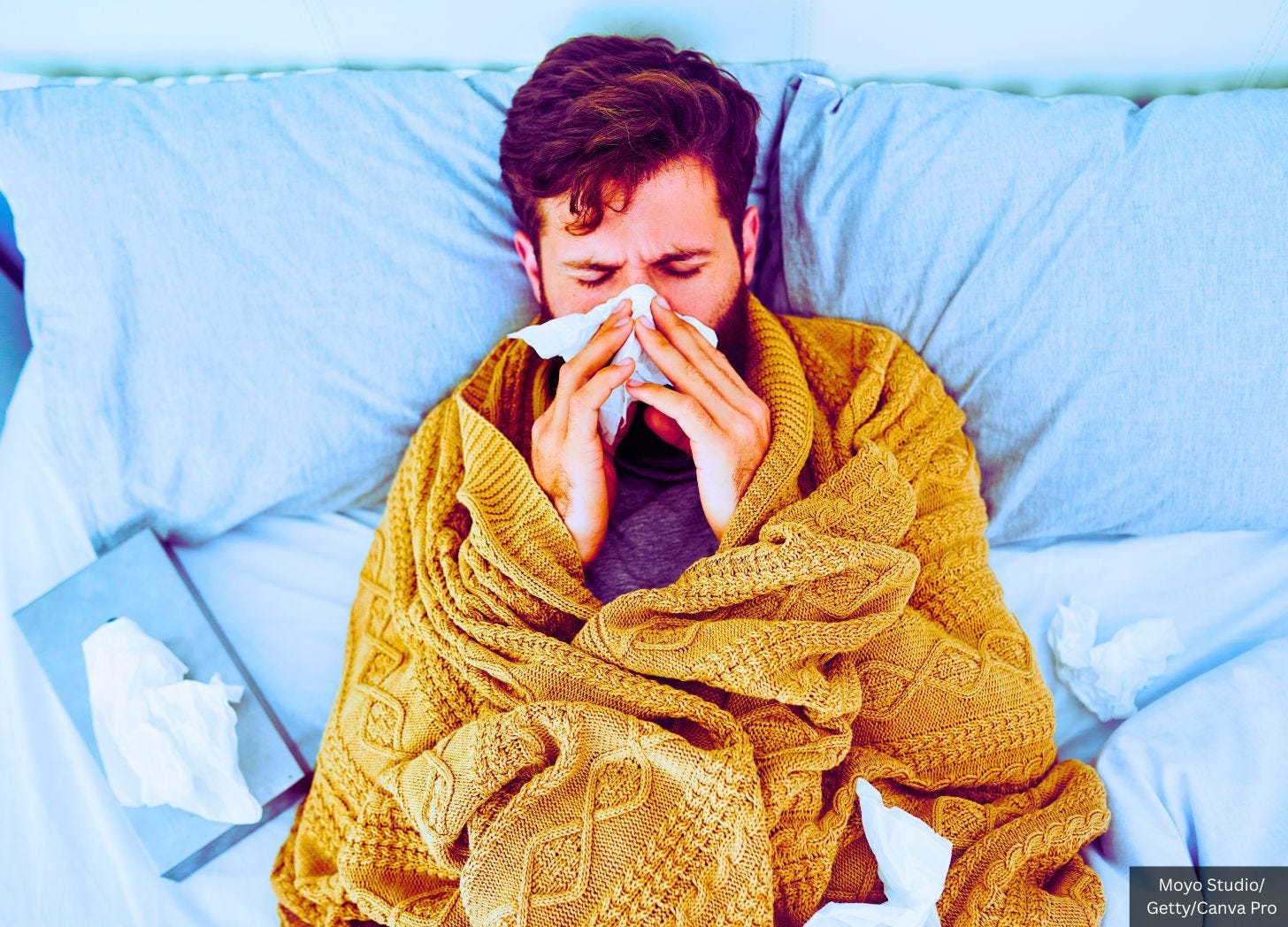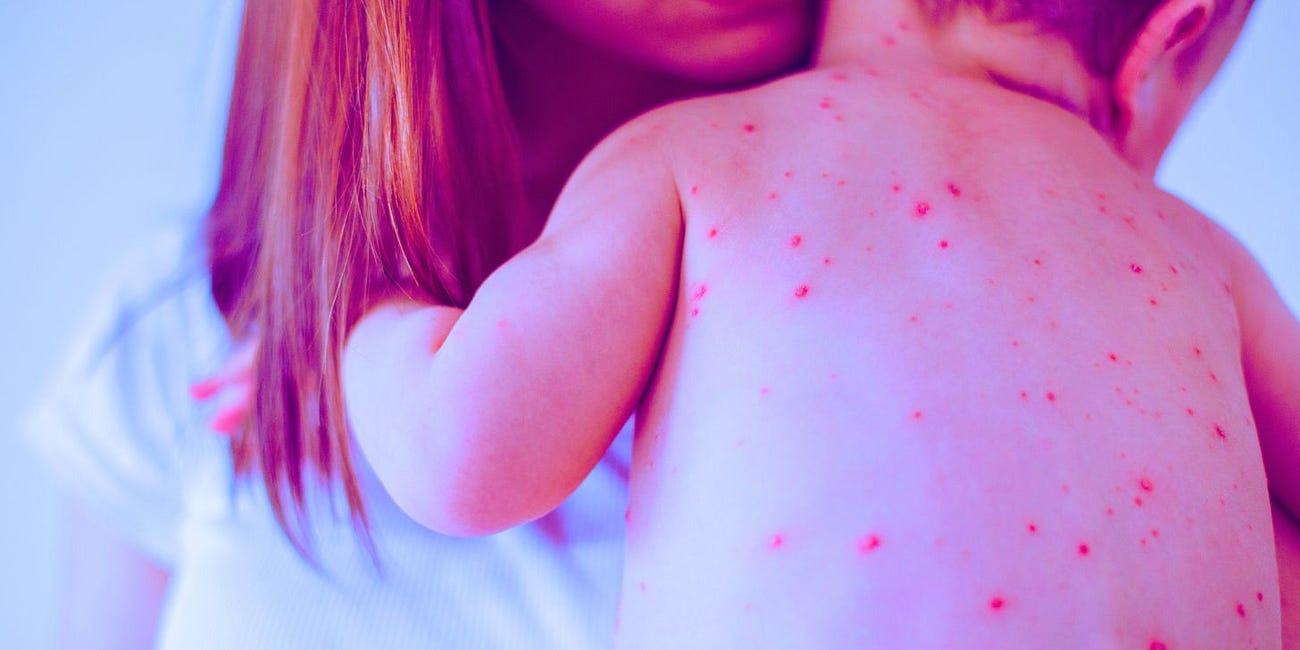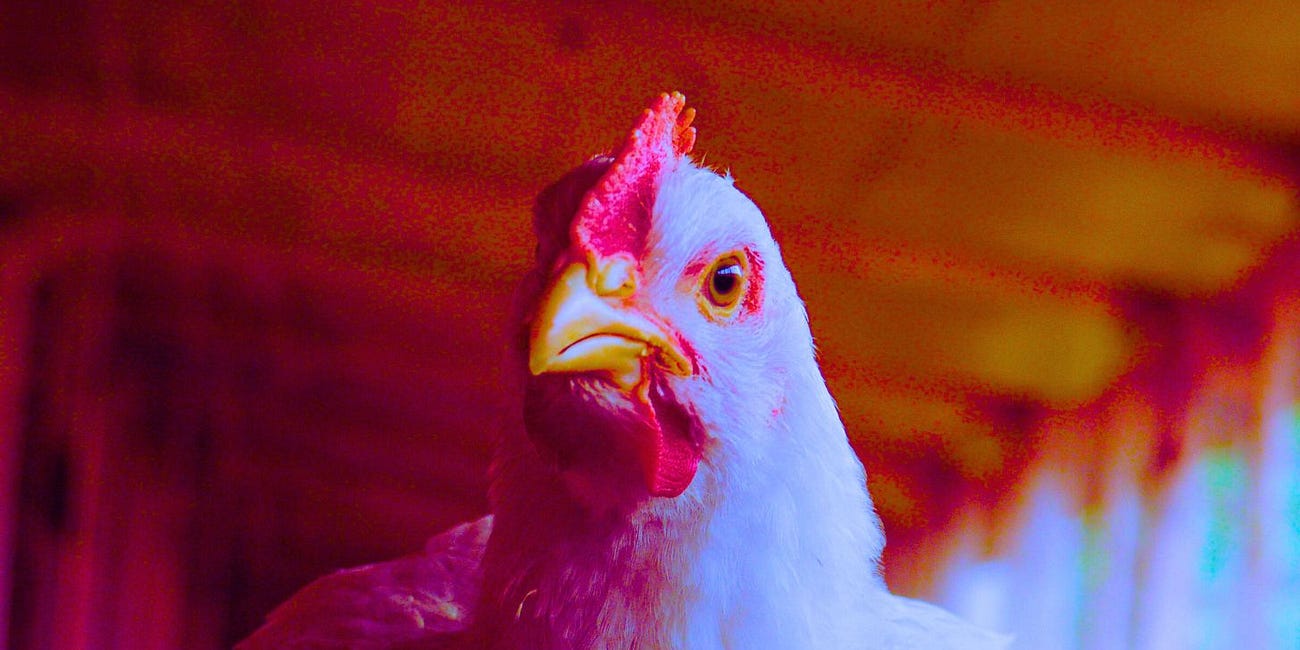27% 'Higher Risk of Influenza' Among Vaccinated: Cleveland Clinic
Study of 53,402 participants.
A brand new preprint study by Cleveland Clinic researchers was posted on Friday, confirming that influenza A or B (flu) vaccination in working-aged adults was “associated with a higher risk of influenza.”
Follow Jon Fleetwood: Instagram @realjonfleetwood / Twitter @JonMFleetwood / Facebook @realjonfleetwood
The findings suggest that the vaccine “has not been effective in preventing influenza this season,” according to the authors’ conclusion.
The study looked to evaluate the effectiveness of the influenza vaccine during the 2024-2025 respiratory viral season.
Employees of Cleveland Clinic who were employed in Ohio as of October 1, 2024, were included.
Cases of influenza among the vaccinated and unvaccinated were compared over the following 25 weeks.
Vaccination protection, treated as a time-dependent covariate, was assessed via Cox regression, meaning its effect was modeled based on the time each individual received the vaccine.
Among 53,402 employees, 43,857 (82.1%) had received the influenza vaccine.
Influenza occurred in 1,079 (2.02%) during the study.
While the cumulative incidence of influenza was similar for the vaccinated and unvaccinated states early, over the course of the study, the “incidence of influenza increased more rapidly among the vaccinated than the unvaccinated,” according to the study.
Significantly, people had a remarkably higher risk of getting the flu after being vaccinated compared to when they were unvaccinated.
The data showed a 27% increase in risk after vaccination, with vaccine effectiveness calculated at –26.9%, meaning the vaccine was associated with worse outcomes in this group.
The risk of influenza “was significantly higher for the vaccinated compared to the unvaccinated state (HR, 1.27; 95% C.I., 1.07 – 1.51; P = 0.007), yielding a calculated vaccine effectiveness of −26.9% (95% C.I., −55.0 to −6.6%),” the study reads.
“Among 53,402 working-aged Cleveland Clinic employees, we were unable to find that the influenza vaccine has been effective in preventing infection during the 2024-2025 respiratory viral season.”
You can download the full study below:
A follow-up report on TrialSiteNews.com confirmed that the study results could not have been due to testing bias because “while vaccinated individuals were more likely to get tested, their test positivity rate was nearly identical to the unvaccinated, indicating a true excess of infections.”
The report also pointed out how vaccinated individuals had a higher risk of flu, with no evidence of protection at any point—raising serious concerns about possible vaccine-related harm, especially given the strong, consistent signal in a healthy, compliant, and relatively young population:
“The findings are deeply concerning. The negative vaccine effectiveness (VE) figure—suggesting harm rather than protection—contradicts public health messaging and raises serious questions about strain mismatch, immune interference, or potential vaccine-related susceptibility. This was not a marginal statistical fluke. The signal held in both unadjusted and adjusted models and was detected early using time-dependent methods. No protective effect emerged at any point.”
“Moreover, this wasn’t a flawed population. The cohort skewed young (mean age 42), mostly healthy, with high occupational compliance. The data were robust enough to reject the common defense that odds ratios from ‘test-negative’ studies exaggerate protection—because here, direct risk was measured.”
It emphasized the need to rethink taking yearly flu shots.
“This hard-hitting real-world analysis suggests the 2024–2025 flu vaccine not only failed to protect working-age adults but may have increased their risk of infection. In an era of mounting skepticism and vaccine fatigue, public health authorities must reckon with data like this—not dismiss it. Annual flu vaccine strategies may need a serious rethink, particularly in years of poor strain matching. At minimum, real-time effectiveness tracking should become a national imperative, not an afterthought.”
In light of these findings, the question is no longer whether annual flu shots should be re-evaluated—but how long public health officials will ignore clear, data-driven signals that this year’s vaccine may have done more harm than good.
Follow Jon Fleetwood: Instagram @realjonfleetwood / Twitter @JonMFleetwood / Facebook @realjonfleetwood
NIH Halts Funding for COVID-19 Projects While Trump Admin Sets Stage for Next Pandemic
The U.S. National Institutes of Health (NIH) will be cutting grants for COVID-19 research, according to a Wednesday report from Nature.
Texas Gave 15,000 More MMR Shots This Year—Now It Has More Measles Cases Than the Entire U.S. Had in 2024
Texas administered 15,000 more measles vaccinations this year compared to 2024—and now there’s a growing measles outbreak that has surpassed the total number of cases reported across the entire United States last year.
Want to Ban mRNA Shots? Here's a 51-Page Bill Template You Can Hand to Your Legislator
JonFleetwood.com Founder and Editor-in-Chief Jon Fleetwood, alongside a team of esteemed medical experts, has drafted the most comprehensive legislative template to date aimed at banning DNA/RNA-based vaccine products across humans, animals, and agricultural produce.
Bill Template to Make Nebulized Budesonide Over-the-Counter
In response to urgent public health needs exposed during recent respiratory disease outbreaks, including the ongoing measles outbreak in West Texas, a new legislative bill template has been introduced to authorize over-the-counter (OTC) sales of nebulized budesonide (respules) and nebulizer machines.
Canada Buys 500,000 Formaldehyde- and Mercury-Containing Bird Flu Vaccines Amid Internationally Coordinated Pandemic Push
The Public Health Agency of Canada (PHAC) has purchased 500,000 doses of GSK’s human vaccine against H5N1 avian influenza bird flu, ArepanrixTM.
147 Million Poultry Slaughtered Since 2022—Culled, Not Killed by Bird Flu
The U.S. government has mandated the mass culling of poultry, leading to the loss of a record 147.25 million birds across all 50 states and Puerto Rico since 2022.
USDA Pumps $100 Million Into Bird Flu Vaccines
President Donald J. Trump’s U.S. Department of Agriculture (USDA) today announced plans to invest $100 million into bird flu “prevention, therapeutics, research, and potential vaccine candidates.”














I believe influenza viruses are intentional. I believe viruses were once harmless and became problematic through gain of function in the U.S.
I also believe the current measles outbreak was intentional by big Pharma (the vaccine industry) to go against Kennedy and new HHS admin. My guess is, it's patented in the U.S. And can probably be traced??
I noticed this at my place of work as well. If a person got a flu shot then later in the flu season they would be the one to need a week off to recover from the flu. Amazingly they never figured it it out.